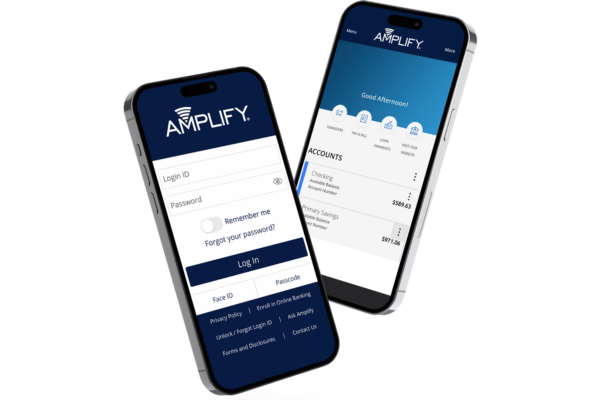The State of Bank Fees: 2023
Bank fees funnel billions of dollars from a minority of consumers into the profits of many banks. In this article, we pull together current public data to show the full scope of fee income for banks and credit unions – and how much those “free checking accounts” might really be costing Americans each year.
These days it seems like everyone is talking about bank fees. From presidential addresses to national media coverage, things like overdraft fees have gone from the bottom of bank statements to the top of headlines worldwide. And thanks to an increase in public scrutiny, banks and credit unions are starting to respond, making sweeping changes to their own fee tables that puts more money back in the hands of their customers – where, quite frankly, it belongs.
Early in 2022, Wells Fargo introduced sweeping changes to their overdraft-related fees and a 24-hour grace period for customers. Later that year, Bank of America followed suit, announcing several changes to their overdraft services and fee structure. In fact, these changes have caused overdraft fees to plummet for most financial institutions, with the Consumer Financial Protection Bureau recently estimating that banks have lost over $5 billion in overdraft fee income when compared to pre-pandemic numbers.
But overdraft fees are just one of dozens of fees charged by financial institutions. To understand how bank fees are affecting consumers, we need to look at varying types of fee income – including maintenance fees, wire transfers, and more. In this article, we pull together current public data to show the full scope of fee income for banks and credit unions – and how much those “free checking accounts” might really be costing Americans each year.
How much do bank fees cost?
As attitudes toward bank fees shift, many financial institutions have started to reevaluate their approach to bank fees. This is good news for consumers, but it also means there is less consistency than ever between what banks charge. Even if you were to just narrow the conversation to overdraft fees – the most recognizable bank fee forced upon consumers – you will still find a lack of consistent fee tables from one institution to another. One expert even went so far to call the current banking landscape as having “the widest differences in overdraft prices, features, and approach in U.S history” (CU Today).
But all of this begs the question: how much do Americans pay in bank fees? The answer is it varies.
- According to a 2021 GoBankingRates survey, the average American pays $7.00 a month in banking fees (GoBankingRates).
- But if we look exclusively at those who pay bank fees, those numbers skyrocket. BankRate reports that the average fee costs for a consumer are $24.00 per month or $288.00 per year (BankRate).
Adding to this confusion are the multitude of studies performed on bank fees, many of which focus exclusively on the impact of overdraft or insufficient funds (NSF) penalties. In the following sections, we will list several pricepoints for each fee category to paint as clear a picture as possible of the impact of bank fees on modern consumers.
How much are overdraft fees?
In August 2022, the average overdraft fee was reported as $29.80 according to a study by BankRate (BankRate). Meanwhile, another 2022 study – this one released by MoneyRates – found that the average overdraft occurrence costs consumers $30.82 (MoneyRates). In January 2023, economic research firm Moebs $ervices LLC found that $30.00 was the average overdraft price (CU Today).
How much are maintenance fees?
A study conducted by Forbes Advisors in 2021 found that the average maintenance fee for banks, credit unions, and neobanks was $5.14 (Forbes Advisor). The average service fee for noninterest checking accounts is $5.44 according to a 2022 banking study performed by BankRate (BankRate). But even with free accounts on the rise, a 2022 study by MoneyRates found that the average maintenance fee on checking accounts was now $13.95 per month (MoneyRates).
How much do banks earn in fees?
Each year, banks earn billions of dollars in fees from consumers. But because a lot of those income statements are only available to investors, landing on a specific number can be difficult. Again, we turn to overdraft fees as a slice of the overall fee income pie.
- According to one study by the Consumer Financial Protection Bureau, consumers paid $15.47 billion in overdraft and NSF fees in 2019 (CFPB).
- According to a different report from the Center for Responsible Lending, consumers paid $11.68 billion in overdraft fees in 2019 (CRL).
- The 2022 edition of the FinHealth Spend Report found that consumers paid $10.7 billion in overdraft and NSF revenue in 2021 (Financial Health Network).
- Bloomberg published a study in 2022 that suggests overdraft fees alone are costing consumers $8.00 billion a year (Bloomberg).
Since overdraft fees represent a big chunk of bank earnings, it’s important to understand how and why they are charged to consumers.
When do banks charge overdraft fees?
Overdraft fees are a penalty charged by a bank when a customer’s transactions bring their account into a negative balance. In essence, an overdraft fee works as a short-term loan. For example, say you accidentally grab the wrong debit card from your wallet and charge $30.00 in groceries to a checking account with only a $20.00 balance. Under a standard overdraft protection plan, your bank will cover the difference to allow the transaction to go through but reserve the right to charge you a fee each time you use that card. But if you aren’t paying close attention, you could rack up several overdraft fees in a single day, totaling more than $100.
Banks will tell you that overdraft fees are a matter of personal responsibility – that it is your obligation to understand the terms and conditions of an overdraft account and to manage your spending. But even as banks loosen their grip on overdraft fees, they continue to create complicated conditions that can be difficult for consumers to navigate, especially for low-income Americans who may be living paycheck-to-paycheck.
Here are a few examples of fee terms and conditions consumers must navigate:
- Texas Capital Bank charges a $15.00 overdraft fee on any transactions that overdraft your balance by more than $50. You have one business day to bring your balance back into the positive, otherwise, Texas Capital Bank may charge fees on the previous day’s transactions (Texas Capital Bank).
- Wells Fargo charges a $35.00 overdraft fee on any transactions that overdraft your balance by more than $5.00. Like Texas Capital Bank, you have one additional business day to address that negative balance, and fees may be assessed on anyone who fails to deposit equal funds by midnight Eastern Time (Wells Fargo).
- Chase Bank charges a $34.00 insufficient funds fee on any transactions that overdraft your balance by more than $5.00. There are also additional criteria that will help you prevent these fees, including additional overdraft protection programs (Chase Bank).
Is this a fair approach to fee avoidance? In a world where a single paycheck is all that keeps 40% of Americans from poverty (CBS News), it’s hard to think that this is a system with consumers’ best financial interest at heart.
Who pays the most in bank fees?
When breaking down the impact of bank fees on consumers, one of the more surprising statistics is that most people do not pay any bank fees whatsoever.
But this means that the burden of bank fees disproportionately falls on a small subsection of consumers, particularly low-income households (CBS News).
- 73% of Americans pay nothing in bank fees (BankRate).
- 9% of account holders pay 80% of all overdraft fees (New York Times).
And when you look at the breakdown of who pays the most in fees, what emerges are clear demographic trends. People of color and younger generations are hit the hardest by banks’ fee strategies, mirroring overall trends in wealth inequality across the country (United States Census).
- White customers pay an average of $5.00 in bank fees according to a 2020 survey from BankRate (CNBC).
- Black customers pay an average of $12.00 a month in bank fees, an 82% increase over their White counterparts (CNBC).
- Hispanic customers pay an average of $14.00 a month in bank fees, a 94% increase when compared to White bank customers (CNBC).
While the disproportionate fee revenue for people of color is concerning, this is not the only demographic trend worth noting. Another BankRate study released in 2022 also captures the breakdown of fee revenue by generation (CBS News), while a 2023 study by BankRate suggests that everyone is paying more in fees with the threat of a recession looming – but Gen Z and Millennials are still getting hit the hardest (BankRate).
- Gen Z pays $19.00 a month in fees according to the 2022 study and $25.00 a month in fees according to the 2023 study.
- Millennials pay $16.00 a month according to the 2022 study and $28.00 a month according to the 2023 study.
- Gen X pays $4.00 in fees according to the 2022 study and $17.00 in fees according to the 2023 study.
- Baby Boomers pay $2.00 in fees according to the 2022 study and $22.00 in fees according to the 2023 study.
Given these numbers, it should come as no surprise that there is a clear generational divide when it comes to trust in a financial institution. According to a 2022 study by Cornerstone Advisors, only 66% of Gen Z customers believe that their bank “adequately discloses its fees,” compared to 80% for Gen X and 88% for Baby Boomers (Forbes).
It’s Time for No Fee Banking
No matter how you slice it, bank fees – and particularly overdraft fees – funnel billions of dollars from a minority of consumers into the profits of many banks. This effectively turns banking into a subscription-based model where those with the lowest balances are asked to pay more than their fair share of the operating costs (and earnings) of their financial institution.
Thankfully, the conversation around bank fees is slowly starting to change. And as more organizations like Amplify Credit Union do away with bank fees altogether, we may one day see the wholesale change that the industry so desperately needs. Until then, we hope that consumers will maintain a healthy skepticism when it comes to the fees their bank charges. As Amplify has shown, it is possible to get rid of fees on your deposit accounts. We hope to be just the first of many on the journey to fee-free banking.
You Don’t Have to Pay Bank Fees
Join the fee-free banking community today.

